Quick Summary:
On August 12, 1822, the year after the United States received possession of the Floridas, an Act of the Territorial Legislative Council divided West Florida into two counties–Jackson and Escambia. At that time, Jackson County included all territory between the Choctawhatchee and Suwannee Rivers, an area which now encompasses land in seventeen North Florida counties. Jackson County is named in honor of Andrew Jackson, Governor of the Territories of East and West Florida. The county seat is Marianna, incorporated November 5, 1828.
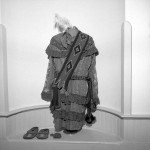 Early History of Territorial Florida Jackson County received its earliest human inhabitants about 5000 to 1000 B.C. Native American History of Jackson County, Florida The Fort Walton civilization lasted from 900 AD to the mid-1700s. This civilization was centered along the Apalachicola and Chattahoochee Rivers and was agrarian in nature. The Fort Waltons were ancestors of the Apalachee, who occupied the region east of the Apalachicola when the Spanish arrived. 1559 – Tristan de Luna established a short-lived settlement at Pensacola Bay. The Spanish settlement period began and led to a string of missions along the Panhandle. 1674 – The missions of San Carlos de los Chacatos and San Nicholas de Tolentino were established in what is modern-day Jackson County. These missions were destroyed by Colonel James Moore’s raids in 1703 and 1704. 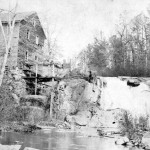 1693 – Governor Torres Y Ayaia writes of what is known as Blue Springs in Jackson County, reporting having pitched camp at a cave formed of limestone and a large spring of water. 1763 – Spain ceded Florida to England in February 1763. England divided Florida into two provinces, East and West Florida, with the Apalachicola River as the dividing line. The region would transfer among governments until the British re-ceded the two provinces of Florida back to Spain in 1783. 1813 – The removal of Indians from rougly 20 million acres led to a land rush into area. 1821 – The Cession Treaty between the U.S. and Spain was ratified by the governments in 1820 and 1821. On July 10, 1821, the U.S. acquired Florida. 1822 – Florida became a territory on March 30, 1822 by Act of Congress. The first two Florida counties were Escambia and St. Johns, created on July 21, 1821. Legislative council created Jackson and Duval counties on August 12, 1822. By that time, Jackson County had 150 pioneer families. 1827 – The Cities of Marianna and Webbville are founded. Founded by Robert Beveridge, Marianna is the oldest incorporated town in Jackson County. It is believed that Marianna is named for Mr. Beveridge’s wife, Anna Maria, with the two given names reversed, however, other credible theories behind the name choice have been put forth. Webbville was located about three miles northeast of Cottondale and grew from a “squatter settlement. ” Webbville was named for Col. James Webb, a member of the Legislative Council. Among the first semi-public academics in the Florida Territory was Webbville Academy, which opened on February 27, 1827, and was the first school in the county to be chartered by the Legislative Council. 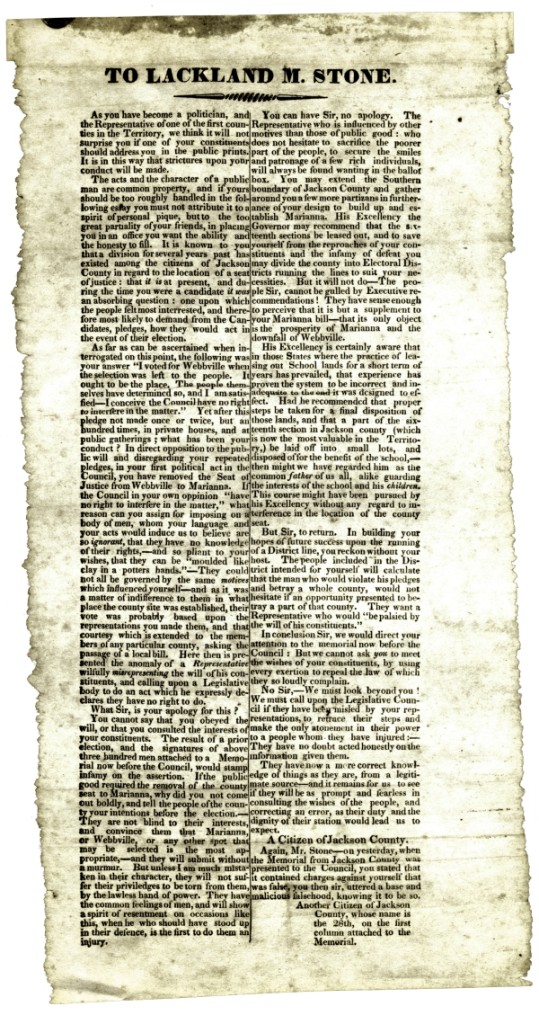 1829 – Jackson County seat controversy “resolved” From 1822 until 1830, there was no permanent county seat. The first legislative council met at what is now Blue Springs. It came to a head in 1827. Although Webbville won at the polls in 1828, Congress had not granted authority to locate a town on school land reserve. By the time Congress gave them this authority in 1829, the Legislative Council had forced the courts to move to Marianna. As a result, the majority of the businesses moved to Marianna and Webbville became a ghost town. No specific enactment settled the issue; the county seat has just remained at Marianna. 1829 to early 1833 – The Bank of West Florida (1829) and the Farmers Bank of Marianna (1833) were the second and ninth banks organized in the Territory of Florida. 1832 – Jackson County is split; Fayette County is created and includes all parts of Jackson County lying east of the Chipola River and the apex formed by the confluence of the Chipola and Apalachicola River. 1833 – The planters in the northern part of Fayette County object and that portion of land is returned to Jackson County in 1833. The remaining residents of Fayette County then petitioned to be re-joined to Jackson County because their total population was then less than 100 qualified voters. The “lost county” was returned to Jackson County in 1834. 1834 – Marianna Academy was incorporated by Territorial legislature on February 6. 1839 – Jackson County delegates support the Florida Constitution The Constitutional Convention was held in St. Joseph from December 3, 1838 to January 11, 1839. The Constitution passed in May of 1839 by 119 votes. Jackson County was the only county west of the Apalachicola River to support the Constitution. It was over six years before Florida was admitted to the Union along with Iowa, on March 3, 1845. The joint admittance was necessary to keep the balance of free and slave states.
1847 – The first Marianna newspaper was the Florida Whig, founded in 1847. Other early papers included the Marianna Patriot and the Marianna Courier. In 1860, there were 14 churches in the county with their own buildings: nine Methodist, three Baptist, one Episcopalian, and one Presbyterian. An 1860 census showed five “common schools” with a total of 122 students, less than one quarter of white children of school age. Education was largely for the wealthy that could afford private tutors and out-of-state schools for their children. (The public school system was not established until 1868. School activities were suspended during the Civil War.)
Florida was the third state to withdraw from the Union after Lincoln’s election. The prosperous and conservative planters of Jackson County were not in favor of immediate secession. Florida withdrew on January 10, 1861 and was an “independent nation” for a month before becoming one of the Confederate States of America. Salt production became a major industry for Jackson County residents during the war. An estimated 500 Jackson County men fought for the Confederate Army between 1861 and 1865, about 10% of the total white population. The Battle of Marianna is the most tragic and memorable event in Jackson County history. General Asboth of the Union wanted to capture the St. Andrews salt works by way of Marianna. The 200 Confederate troops, men and boys, fought about 500 Union troops. The Episcopal Church was burned in the battle. Post Civil War (1865 – 1868) After the Civil War, plantation owners were reduced to poverty, with many being land poor and unable to pay taxes. A crop failure in 1867 intensified this precarious situation. Many businesses and hundreds of individuals were forced into bankruptcy. Many school and churches closed. 1869 – 1871 – Second Battle of Marianna / Jackson County War Due to frustrations over changes due to Civil War came what has been called a “second rebellion” against authority, referred to by some as the “Second Battle of Marianna” or the “Jackson County War.” This period lasted from 1869 until 1871 and resulted in the death of over 150 men, women, and children, white and black, exceeding the casualties of the 1864 battle. Some were native whites but the majority was blacks and white Republicans. 1880 – 1900 – Jackson County Revivial The 1880 to 1900 period for Jackson County was a period of revival for agriculture and business. The population grew from 14,372 to 23,337 in just 20 years. The county’s first railroad was completed as well as the first bank since the early pioneer banks. Also, the county expanded its timberproducts. The railroad brought the communities of Cottondale, Sneads, and Grand Ridge. In late 19th century, popular entertainment included croquet, tennis, and quarter horse racing, as well as cornet bands, thespian clubs, and traveling troops. Fishing, hunting, and canoeing were also popular. Favorite events included county fairs and horse races. 1882 – First railroad completed in Jackson County by the Pensacola and Atlantic line 1901 – Marianna Telephone Exchange becomes the first public utility in Jackson County. Graceville was named for the community populated largely by the Graces, originally from Campbellton, Florida. Graceville was home to the Greenwood Products Company, the world’s largest peanut shelling plant. On December 31, 1947, a shipment of 115 TONS of shelled peanuts (46 railcar loads) was shipped to Cincinnati, Ohio.1903 – Graceville incorporated 1905 – Cottondale incorporated Cottondale is located about 3 miles southwest of the original Webbville. It is at the junction of two rail lines and two major highways. 1900 – 1910 Dr. N.A. Baltzell had the first car in Jackson County and J.D. Smith began selling Buicks in 1908. By the turn of the century, lumbering, extraction and manufacture of naval stores, and real estate transactions were a large part of the Jackson County economy. Marianna had the only high school in the county and Sneads had the only junior high school. Jackson County was one of the largest cotton-producing counties in Florida from 1900 to 1915. With 2,927 farms in Jackson County in 1908, cotton was still the major money crop. The boll weevil decimated this industry. This led to a transformation of Jackson County agriculture from cotton to peanuts. 1910 – Jackson County sells bonds for road improvements Jackson County was Florida’s first county to issue bonds for road improvements. The county was a pioneer in modern highway financing by issuing $300,000 in bonds to build 800 miles of improved sand-clay roads in 1910. 1910 – 1920 The boll weevil decimated the cotton crop, with production declining from over 23,000 bales of cotton in 1913 to fewer than 2000 bales in 1916. This led to a transformation of Jackson County agriculture from cotton to peanuts. Jackson County became one of the largest peanut producing areas in the U.S. By 1920, peanuts were a new money crop. Among other crops replacing cotton were corn, wheat, rice, watermelon, and sugar cane. By 1920, millions of board feet of lumber and thousands of barrels of turpentine and rosin had been shipped from Jackson County. Sneads became the first special school district in Jackson County. By 1914, there were 13 special school districts. Special school districts were eliminated by an act of the Florida Legislature in 1947. Marianna began building sidewalks and paving streets in 1915. The first hospital in Marianna was opened by Dr. Baltzell about 1916 but the Baltzell Hospital itself was not completed until 1922. 1920 – Marianna approved street lighting and it was installed by 1921. 1927 – The Jackson County Floridian newspaper was established by J.C. Corcoran.
During the 1920’s, Marianna began to make extensive public improvements, such as developing the Confederate Memorial Park downtown, and paving it for automobile usage and parking. Improved roads and increased number of cars reduced the numbers and sizes of many small towns which emerged in the early 1900’s, such as Cypress, Bascom, Alford, Malone, Inwood, Alliance, Compass Lake, Dudley, Lovedale, Glass, Jacob, and Sink Creek. 1930 – 1940 The early 1920’s were a period of poor farm prices and economic depression. J.C. Corcoran had married a Greenwood woman back in 1908 and he decided to invest in Jackson County. He founded the Marianna Lime Products Company, the five-story, 75-room Chipola Hotel (completed in 1926), Chipola Dairy Farm, the Florida Publishing Company, and the Marianna Fruit Company. The Marianna Fruit Company started as a citrus industry in the Panhandle using the Satsumaorange from Japan, which could withstand colder weather than most oranges. By 1930, governments were overwhelmed with delinquent taxes due to the stock market crash of 1929. Some of the projects undertaken during this time include the construction of a municipal airport in Marianna, a roadway between Cottondale and Graceville, a sewage disposal plan, and the golf course by Florida Caverns State Park.  A number of natural disasters in the 1930’s contributed to increasing economic problems. Fires in Cottondale and Graceville in 1932 destroyed much of their business districts. The freeze of 1935 wiped out the 3000 acres of Satsuma groves. The Marianna Fruit Company and the Hotel Chipola Corporation went bankrupt in the mid-1930’s. The Forest industry began to change because most of the timberlands were already cut. The USDA began promoting a replanting program and Jackson County joined about 1935. World War II The Marianna Army Air Field was founded in 1942. In 1943, a compound near Cottondale was built to house German war prisoners, who were used to gather peanuts, pick cotton, and work in turpentine stills. At the end of the war, Jackson County had a population of 34,509 and was still agriculturally-based. 1948 – The St. Anne’s (Catholic) Church is built http://www.fnai.fsu.edu/ARROW/almanac/history/history_jackson.cfm |

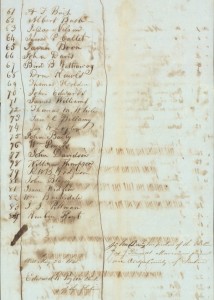
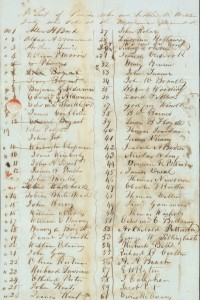
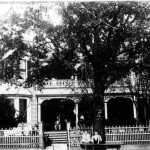 1920 – 1930
1920 – 1930